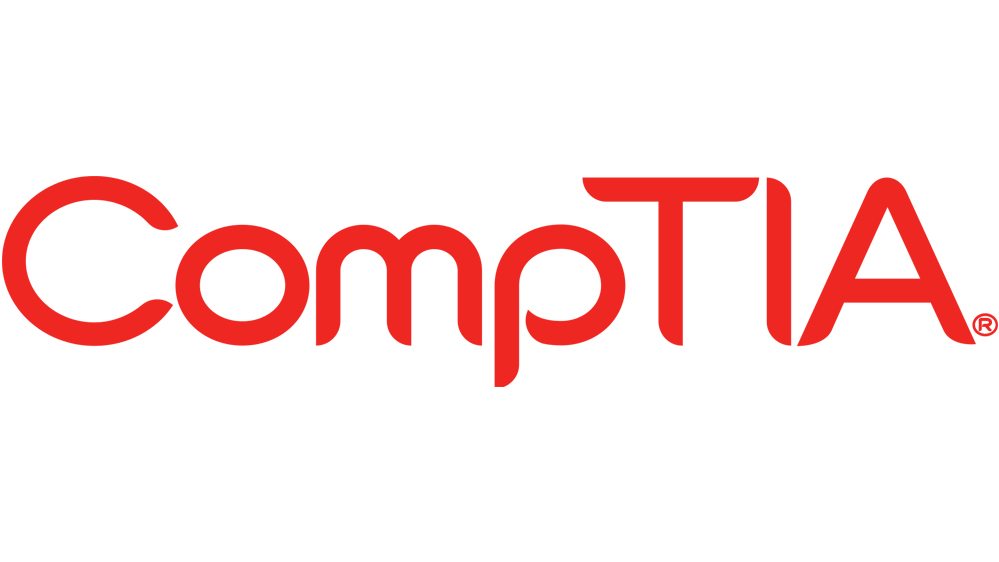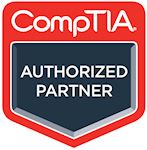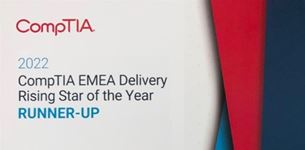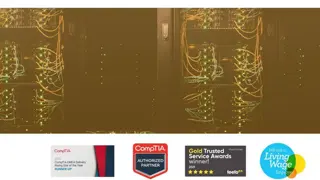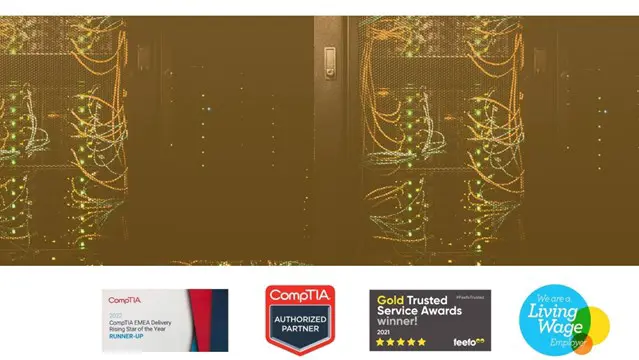
Comptia A+ Core 1 and Core 2
Comptia A+ core 1 220-1101 and Comptia A+ core 2 220-1102
IT Certify
Summary
**25% off**
with 12 months access
- Exam(s) / assessment(s) not included in price, and must be purchased separately
Add to basket or enquire
Overview
**25% off with 12 months Access**
The CompTIA A+ course is the 1st link in the chain of your IT career and will form the base of your studying in IT.
You'll be packed with everything you need to start your path in IT with the CompTIA A+ course from IT Certify.
At the end of this course you can expect a rewarding salary of between £22,000 to £27,000.
The CompTIA A+ is in two parts Core 1 and Core 2. You must complete Core 1 before you attempt Core 2. This course includes both parts and is the new course which covers the update in 2019.
CompTIA A+ 220-1101 covers mobile devices, networking technology, hardware, virtualization and cloud computing, and network troubleshooting.
CompTIA A+ 220-1102 covers installing and configuring operating systems, expanded security, software troubleshooting and operational procedures.
Full CompTIA A + module details are below
CompTIA Core 1
1.0 – Mobile Devices
• What are we covering?
• 1.1 Given a scenario, install and configure laptop hardware and components
• 1.2 Given a scenario, install components within the display of a laptop
• 1.3 Given a scenario, use appropriate laptop features
• 1.4 Compare and contrast characteristics of various types of other mobile
devices
• 1.5 Given a scenario, connect and configure accessories and ports of other
mobile devices
• 1.6 Given a scenario, configure basic mobile device network connectivity and
application support
• 1.7 Given a scenario, use methods to perform mobile device synchronization
2.0 Networking
• What are we covering?
• 2.1 Compare and contrast TCP and UDP ports, protocols and their purpose
• 2.2 Compare and contrast common networking hardware devices
• 2.3 Given a scenario, install and configure a basic wired/wireless SOHO
network
• 2.4 Compare and contrast wireless networking protocols
• 2.5 Summarize the properties and purposes of services provided by
networked hosts
• 2.6 Explain common network configuration concepts
• 2.7 Compare and contrast internet connection types, network types and their
features
• 2.8 Given a scenario, use appropriate networking tools
3.0 Hardware
• What are we covering?
• 3.1 Explain basic cable types, features and their purposes
• 3.2 Identify common connector types
• 3.3 Given a scenario, install RAM types
• 3.4 Given a scenario, select, install and configure storage devices
• 3.5 Given a scenario, install and configure motherboards, CPUs and add-on
cards
• 3.6 Explain the purposes and uses of various peripheral types
• 3.7 Summarize power supply types and features
• 3.8 Given a scenario, select and configure appropriate components for a
custom PC configuration to meet customer specifications/needs
• 3.9 Given a scenario, install and configure common devices
• 3.10 Given a scenario, configure SOHO multifunction devices/printers and
settings
• 3.11 Given a scenario, install and maintain various print technologies
4.0 Virtualization and Cloud Computing
• 4.1 Compare and contrast cloud computing concepts
• 4.2 Given a scenario, set up and configure client-side virtualization
5.0 Hardware and Network Troubleshooting
• What are we covering?
• 5.1 Given a scenario, use the best practice methodology to resolve problems
• 5.2 Given a scenario, troubleshoot problems related to motherboards, RAM,
CPUs and power
• 5.3 Given a scenario, troubleshoot hard drives and RAID arrays
• 5.4 Given a scenario, troubleshoot video, projector and display issues
• 5.5 Given a scenario, troubleshoot common mobile device issues while
adhering to the appropriate procedures
• 5.6 Given a scenario, troubleshoot printers
• 5.7 Given a scenario, troubleshoot common wires and wireless network
problems
Certification
CompTIA A+
Course media
Description
CompTIA A + Core 2
CompTIA Module 1 – Operation Systems
• Compare and contrast common operating system types and their purposes
• Compare and contrast features of Microsoft Windows versions
• Summarize general OS installation considerations and upgrade methods
• Given a scenario, use appropriate Microsoft command line tools
• Given a scenario, use Microsoft operating system features and tools
• Given a scenario, use Microsoft Windows Control Panel utilities
• Summarize application installation and configuration concepts
• Given a scenario, configure Microsoft Windows networking on a client/desktop
• Given a scenario, use features and tools of the Mac OS and Linux client/desktop operating
systems
CompTIA Module 2 – Security
• Summarize the importance of physical security measures
• Explain logical security concepts
• Compare and contrast wireless security protocols and authentication methods
• Given a scenario, detect, remove, and prevent malware using appropriate tools and methods
• Compare and contrast social engineering, threats, and vulnerabilities
• Compare and contrast the differences of basic Microsoft Windows OS security settings
• Given a scenario, implement security best practices to secure a workstation
• Given a scenario, implement methods for securing mobile devices
• Given a scenario, implement appropriate data destruction and disposal methods
• Given a scenario, configure security on SOHO wireless and wired networks
CompTIA Module 3 – Software Troubleshooting
• Given a scenario, troubleshoot Microsoft Windows OS problems
• Given a scenario, troubleshoot and resolve PC security issues
• Given a scenario, use best practice procedures for malware removal
• Given a scenario, troubleshoot mobile OS and application issues
• Given a scenario, troubleshoot mobile OS and application security issues
CompTIA Module 4 – Operational Procedures
• Compare and contrast best practices associated with types of documentation
• Given a scenario, implement basic change management best practices
• Given a scenario, implement basic disaster prevention and recovery methods
• Explain common safety procedures • Explain environmental impacts and appropriate controls
• Explain the processes for addressing prohibited content/activity, and privacy, licensing, and
policy concepts
• Given a scenario, use proper communication techniques and professionalism
• Identify the basics of scripting • Given a scenario, use remote access technologies
All delivered through our world class online portal:
Navigation and Controls
Our self paced training programmes allow you to study anywhere at any time. Pause, Rewind and play as many times as you like with 24 hour access.
Expert instructor led training
Our instructors are experts in the IT industry with a minimum of 15 years real world experience backed with many certifications in their subject of expertise
Visual demonstrations and multimedia presentations
Expert-led demonstrations and content rich presentations allow IT Certify students to develop their skills based on real world scenarios
Quizzes and exam simulators
Custom made practice exams reflect progress you have made throughout the course. Practice quizzes after each module build your confidence before moving to the next level.
Flash cards and educational games
IT Certify understand every student is unique and learns at a different pace. Our Flashcards and Educational Games are engineered to keep you engaged and 100% focused by providing a bit more fun to learning.
Exams are not included
Who is this course for?
Anyone new to IT
Requirements
No pre-requisites required just the motivation and passion to learn
Career path
Just some of the roles the CompTIA A+ will prepare you for:
1st Line Support
2nd Line Support
IT Technician
IT Support Technician
IT Support Administrator
Computer Support Specialist
Computer Support Administrator
Service Desk Technician
Service Desk Support
IT Customer Support
Questions and answers
Reviews
Currently there are no reviews for this course. Be the first to leave a review.
Legal information
This course is advertised on reed.co.uk by the Course Provider, whose terms and conditions apply. Purchases are made directly from the Course Provider, and as such, content and materials are supplied by the Course Provider directly. Reed is acting as agent and not reseller in relation to this course. Reed's only responsibility is to facilitate your payment for the course. It is your responsibility to review and agree to the Course Provider's terms and conditions and satisfy yourself as to the suitability of the course you intend to purchase. Reed will not have any responsibility for the content of the course and/or associated materials.
